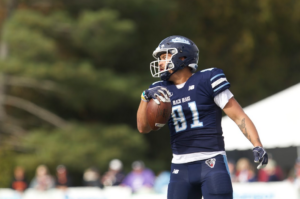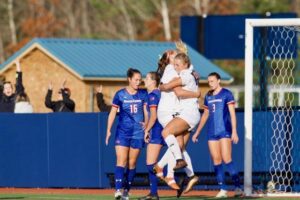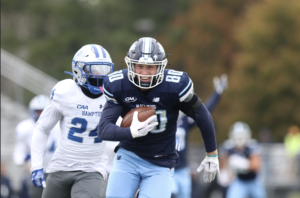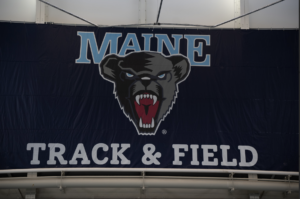In recent years, there has been a massive migration and imbalance between not only divisions, but between the conferences that make up a majority of the professional sports that we all know and love.
In the National Football League, based purely on free agency moves, the capabilities of individual players, and how well rounded the rosters are of each team, the National Football Conference trumps the American Football Conference and it isn’t even close. Within the NFC, there are multiple perennial contenders for the playoffs and even the Super Bowl, while comparatively the AFC has realistically been limited to a select few teams that represent the conference in the Super Bowl. The representatives for the AFC in the Super Bowl for the past 10 years are as follows: New England Patriots with four appearances, the Denver Broncos and Pittsburgh Steelers each with two appearances, and then the Baltimore Ravens and Indianapolis Colts each have one appearance. Comparatively, eight teams have represented the NFC in the past 10 years.
There are two obvious ways to dissect that comparison, that the AFC has been dominated by a few teams that are great at retaining players, developing young players and accommodating for injuries with depth. While the teams that typically dominated in terms of Super Bowl appearances do very well as organizations to keep building a contending team, the NFC just has more teams that are capable of winning games due to the quality of their rosters. Up until this past season, only two teams had consecutively been to the playoffs for an extended period of time, those two being the Green Bay Packers and the New England Patriots, who had each made the playoffs since the 2009-2010 season. Now, the Patriots stand alone, currently on nine consecutive playoff appearances. Forever a powerhouse in the AFC, it’s no surprise that the rest of the conference struggles to put teams into playoff contention.
However, similarly to that of the NFC, the National Basketball Association finds itself with a conference issue. The Eastern Conference, now with Lebron James in the Western Conference as a member of the Los Angeles Lakers, has been left in the hands of the up-and-coming Boston Celtics and the Philadelphia 76ers. Meanwhile, the Western Conference has the back-to-back champions, the Golden State Warriors, along with the Houston Rockets, featuring point guard Chris Paul, shooting guard James Harden, and small forward Carmelo Anthony. Not to be forgotten, the Lakers have been in the playoff discussion following their addition of James. The San Antonio Spurs, a long time staple for the Western Conference playoffs, will also likely be back in playoff contention even after trading small forward and shooting guard hybrid Kawhi Leonard to the Toronto Raptors this past off-season for small forward and shooting guard hybrid DeMar DeRozan.
Losing 16-year veteran shooting guard Manu Ginóbili to retirement before the beginning of the season will leave a large gap on the Spurs, but head coach Gregg Popovich has a similar dynamic to that of the NFL’s Bill Belichick, the next man on the depth chart will step up and play their role in the already established system. There is also the formidable duo of small forward Paul George and point guard Russell Westbrook on the Oklahoma City Thunder, along with the rest of their well rounded roster, that will likely be a force to be reckoned with when the playoffs begin. The Anthony Davis-led New Orleans Pelicans add to an already deep playoff picture for the Western Conference, which will give basketball fans a reason to be passionately watching the playoffs come in mid-April of 2019.
Regardless of the sport, the shift in power for conferences is a trend we’ve seen before. However, in today’s day and age, the reasoning for the shifts has become based more on the opinions of the players than the decisions made by organizations. Since free agency has been an addition to sports in the more modern era, players have been able to market themselves to many teams instead of hoping they would be signed by a team. This also has led to players becoming friends outside of the sport, subsequently leading players to join teams together. Examples of this being Lebron James joining Dwyane Wade and Chris Bosh on the Miami Heat in 2010, the grouping of Rajon Rondo, Kevin Garnett and Paul Pierce on the Boston Celtics in the late 2000s, and then of course the currently dominant Golden State Warriors.
The NFL is following suit, with defensive tackle Ndamukong Suh and cornerback Aqib Talib both signing deals with the Los Angeles Rams this past offseason to build quite the defensive powerhouse, as annual Defensive Player of the Year candidate Aaron Donald and Suh will be rushing the passer from between the tackles and preventing most teams from being able to run the ball. These groupings, commonly referred to in daily conversation as “super teams,” are a reminder that the age of the independent athlete is upon us, and that players control their leagues more today than ever before.
A team such as the Rams or even the Warriors, in their respective sports, were struggling teams less than five years ago, which shows that every imbalance will correct itself as long as organizations continue to recruit free agents and draft quality players out of the collegiate level and abroad. As long as fans stay loyal to their franchise, success will one day find itself in every stadium.









